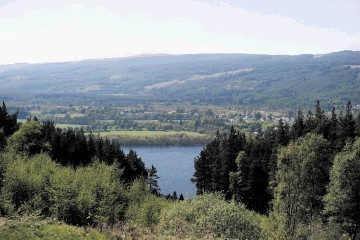
Scotland’s largest mountaineering group claims proposed windfarms on hills overlooking Loch Ness will ruin “unspoilt land” at the tourism hotspot.
Energy firm SSE Renewables wants to instal more than 100 turbines measuring 440ft – the same height as the London Eye.
The company plans to build the largest windfarm in the north at Stronelairg, east of the Glendoe hydro scheme at Fort Augustus.
Under current plans the development would have 83 turbines, reduced from the 140 originally proposed three years ago following public consultation.
The second scheme, at Bhlaraidh, north west of Invermoriston, has been reduced from 138 to 36 turbines.
Chief officer of the Mountaineering Council for Scotland, David Gibson, said fewer turbines would not reduce the devastating effects of the proposed schemes, adding: “The revisions to the original application will not mitigate the fact that these proposals, if implemented, will result in the industrialisation of a large part of the otherwise unspoilt uplands around Loch Ness, with visual intrusion on a massive scale across the region, including views from the Cairngorm National Park.
“That developers are able to put forward such proposals highlights the lack of Scottish Government policy concerning industrial-scale windfarms.”
The council is calling on the government to revise its policy on onshore windfarms to preserve mountain heritage.
Windfarm protestor Lyndsey Ward, of Kiltarlity, near Inverness, said she was concerned the energy firm would try to extend the sites if its initial applications was successful, despite initially cutting turbines. She said: “Maybe it should be asked to sign a contract to say it will not go for an extension.”
SSE Renewables aim to submit planning applications for both developments to the government this summer.
The firm will invest up to £600million in the scheme, creating 125 jobs and a £1.5million community benefit fund.
Projects liaison officer Marianne Townsley said: “These sites were chosen because of the hydro infrastructure there.”
She added a “good proportion” of concerns about visual impact had been addressed and there were no plans for expansion.
